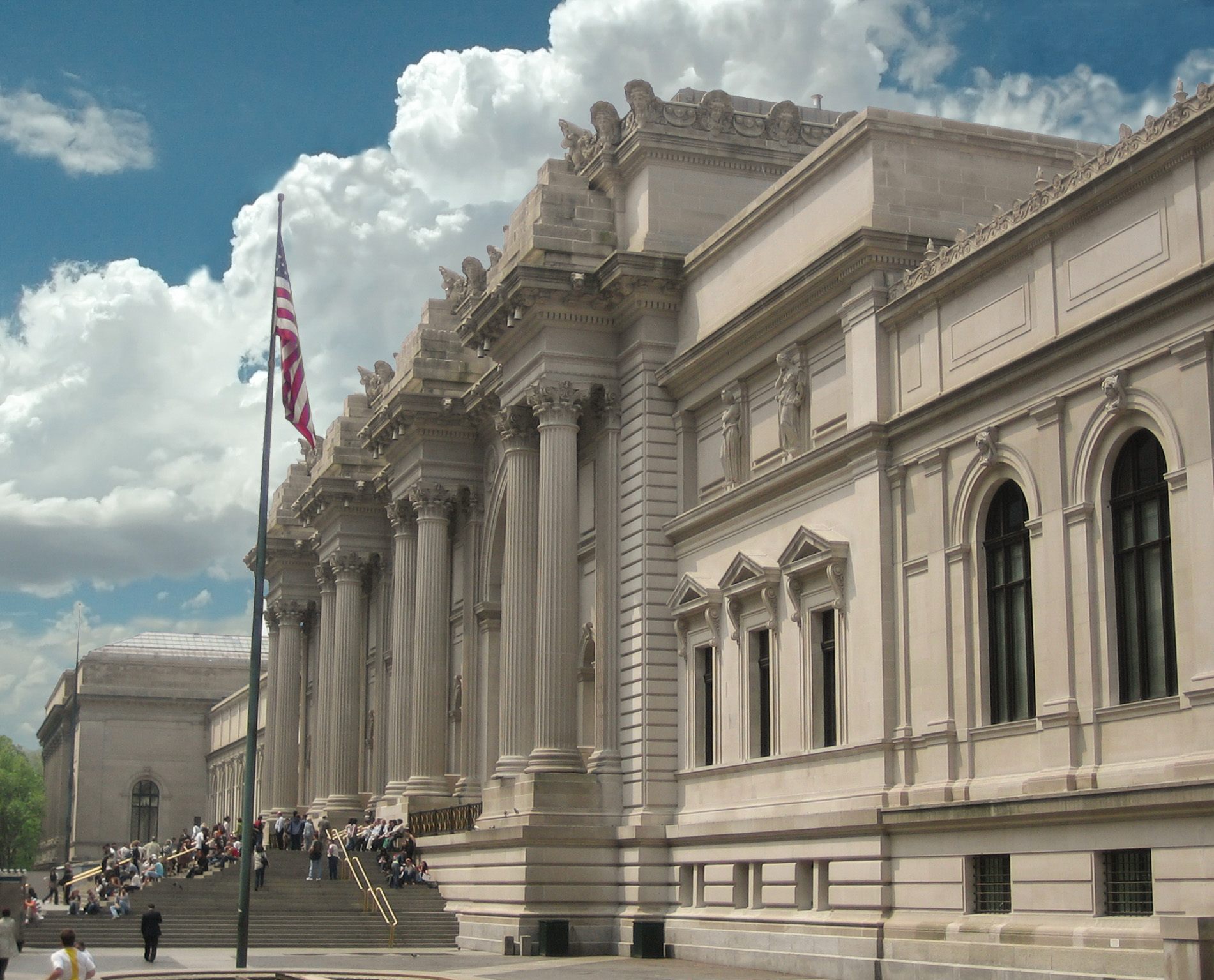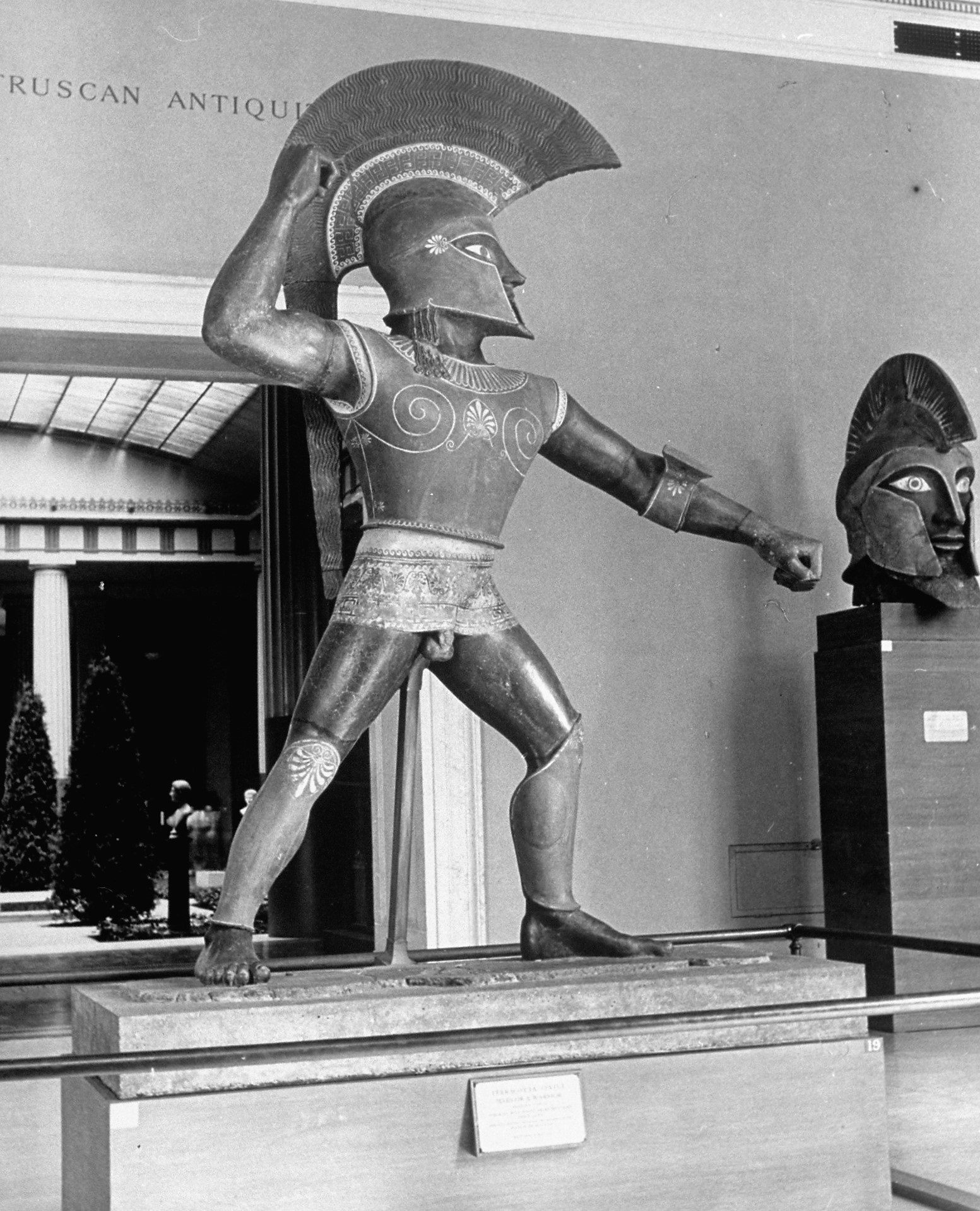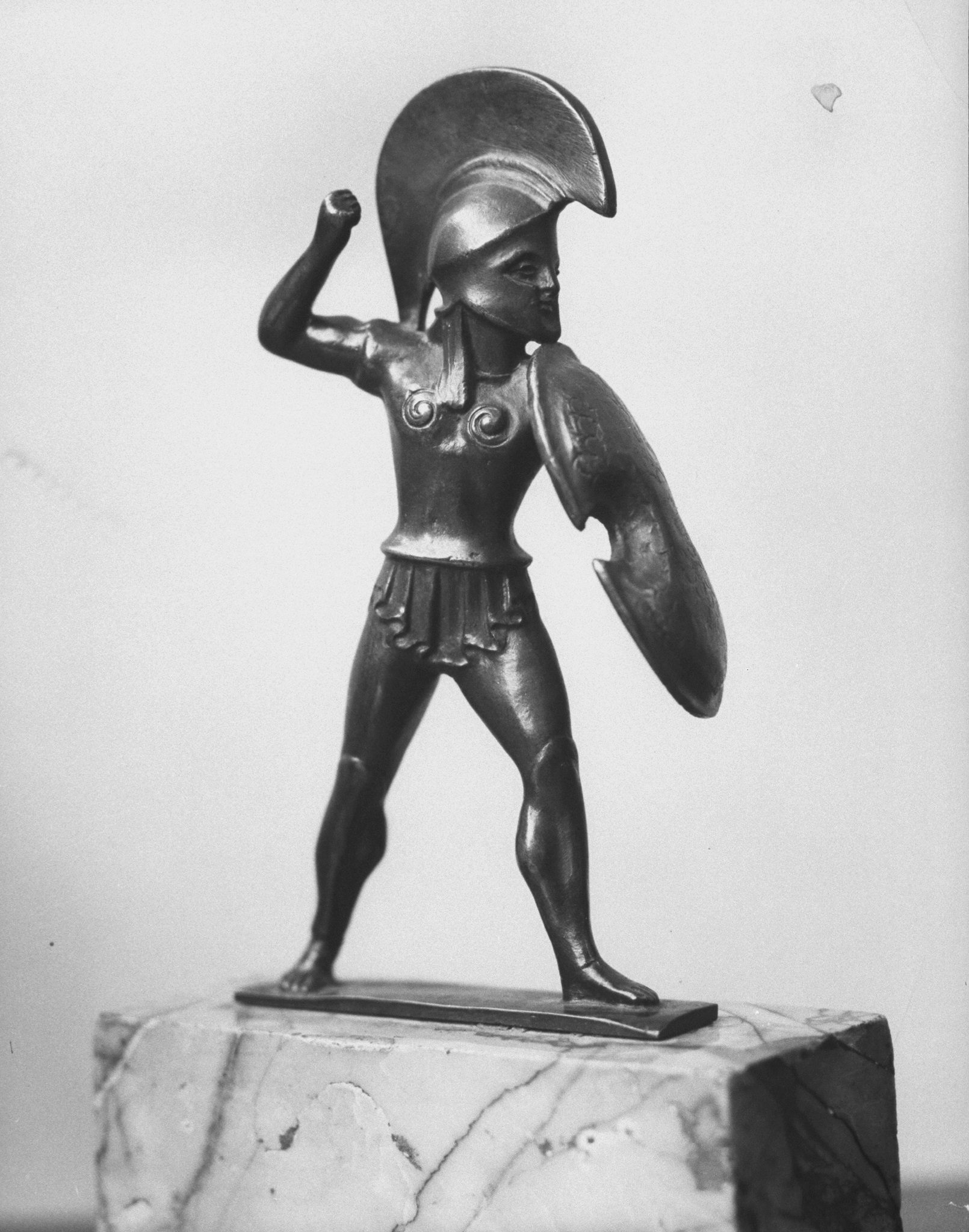The Forged ‘Ancient’ Statues That Fooled the Met’s Art Experts for Decades
The fakes were on display at the Metropolitan Museum of Art for 28 years.

In 1933 at the Metropolitan Museum of Art in New York, three Etruscan warrior sculptures of black terracotta clay towered over their audience in an all-new exhibit. The ancient art, believed to be from the fifth century B.C., had never been displayed before: two warriors stood eight and six feet high, and a four-foot tall head stared into the audience from under its war helmet and big, curly beard.
The curator who acquired them, John Marshal, wrote “I can find nothing approaching it in importance,” in a report for the museum; these pieces challenged known history of ancient Italian art. They were in amazing condition.
There was just one problem: they were fakes. And for the 28 years they were on proud display, even skeptical experts couldn’t help the Met evade one of the most embarrassing scandals of the art world.
Marshal and his colleagues at the museum acquired the statues one-by-one from an artifact dealer named Pietro Stettiner between 1915 and 1921, believing that they were exquisite and unusual examples of Etruscan art that was more influenced by ancient Greek statues than usual in size and aesthetic—the shapes of the eyes, mouths, and general features. The statues were convincing: weathered and cracked, the old warrior statue was missing a finger and an arm; their striking black glazes seemed just like those of other ancient works. While acquiring one of the warriors, Marshal’s college wrote with glee about the artifact’s “wonderful preservation” and added that the asking price was “quite fantastic.” It all seemed too good to be true—which, unfortunately for the Met, it was.

According to the New York Times’ article on the forgeries in February, 1962, the museum had been “uneasy for years” about the large sculptures. The Etruscan culture influenced and invented much of what we think of as Roman, and there were plenty of scholars studying the society’s art; Italian historians in particular began voicing their concerns before the sculptures were displayed. After Marshal’s death in 1928, more rumors circulated about Stettiner’s supposed excavators of the pieces, who were linked to other forgeries in Italy.
While the Met’s 1933 Bulletin insisted that the warriors had been “compared with vigor” and they seemed to compare with other Etruscan works from the fifth century, critics concluded that the sculptures seemed a bit out of place; they were the wrong shape and size. The statues were amazingly complete and well-preserved for their age, yet the old warrior was missing a whole arm. The big warrior was weirdly proportioned, with one oddly long arm and a stocky frame on classically formed legs. According to some experts, they weren’t even particularly good examples of Etruscan artwork. More concerns fluttered into the museum as its exhibit descriptions crept around Europe.

Over the years of the exhibit, the museum’s experts explained this and other doubts away, possibly because of the pure high of new discovery and an attitude in the Western art world that assumed superiority and beauty of classical art. In 1921 art historian and authority Gisela Richter seemingly got carried away in the museum’s Papers on the Etruscan warriors; the find agreed with the exquisite descriptions of Etruscan art in historical writings. “Whom did our warrior represent? Was he a god or a mortal?” she wondered. Richter regretted that her colleagues didn’t know its original location, but believed it might have represented a god—the edge of an altar base seemed to be preserved. Other historians agreed, and examined the statues with wonder.
Weirdly, while the statues’ flaws evaded Richter and others, museum staff examined the pieces closely enough to know specific details, including that the large warrior was “built free hand from the bottom up.” Richter’s paper had also explained that the statues were “Under Greek influence but Italian in nature,” which became a popular deflecting argument in years to come. This last bit, at least, was technically correct, but the Italians who made it were much more modern than expected.
In Italy in the early 20th century, three brothers Riccardo, Teodoro, and Virgilio Angelino Riccardi, and their colleague Alfredo Adolfo Fioravanti were living an archeological forger’s dream: they had easy access to actual artifacts, and both legitimate and corrupt antique dealers who wanted repairs and copies made of their wares. According to George Kohn in The New Encyclopedia of American Scandal, the forgers were long suspected to have made unauthorized excavations in Italy by the government, but managed to avoid actual prosecution. In their studio, the forgers sculpted the large warriors and painted them black, broke them up to fire the sections in their small kiln, and then sent the pieces to their artifact dealer covered with a smattering of mud.

For decades, experts murmured back and forth about the authenticity of the statues, but they lacked evidence to discredit them. Finally, in 1960, ceramic archaeologist Joseph V. Noble of the Metropolitan Museum of Art found a way to test the sculptures: by replicating the methods that the ancient Etruscans used for pottery, he found they used a three stage firing process to make the black glaze and ordered tests of the pottery’s chemical makeup that revealed a black pigment containing manganese, which Etruscans did not use. Noble and a colleague published the exposé, which included tests, researched documents and letters as proof.
There were other red flags that could have been seen earlier on, too. Authentic pieces should have had vent holes to let air circulate through the large ceramic pieces if they had been made and fired whole, but small vent holes were found in two of the statues; the old warrior, which had none, would have exploded had it been made the correct way. In 1961, the surviving forger of the group, Fioravanti, was finally persuaded by museum investigators to appear before the U.S. consulate in Rome to confess the crime holding the left thumb of the big warrior, which he’d kept as a souvenir, according to the New York Times’ description of the events.
The big reveal of the sculptures’ inauthenticity paired with their long-term display was about as scandalous as it could get for a highly esteemed art institution. The forgers had copied the big warrior from a picture of a small bronze Greek statue in a book from the Berlin Museum; the old warrior from an Etruscan coffin at the British Museum, which Kohn writes also turned out to be fake. Most embarrassing of all, the large warrior head was modeled from a head found on a small Etruscan vase in the Met’s own collection. The weird proportions of the big warrior were, it turned out, the result of a short ceiling and small studio. The arm was missing from the large warrior because, as Kohn writes, Fioravanti and the Riccardi brothers couldn’t agree on which way to attach the original arm.
According to the Times in 1962, after the sculptures were outed as fakes, they were locked up in a “morgue” in the basement with restricted viewing for students and scholars, never to be fawned over again. But, for a time, the clumsy art of some Italian potters made experts point in awe—leading to the first time the Met would ever admit to forgeries in an esteemed collection (though, thanks to Noble, not the last). While detecting forgeries is tricky, one thing is certain: if the authenticity of a piece of art is important to you, it pays to be careful.





































Follow us on Twitter to get the latest on the world's hidden wonders.
Like us on Facebook to get the latest on the world's hidden wonders.
Follow us on Twitter Like us on Facebook